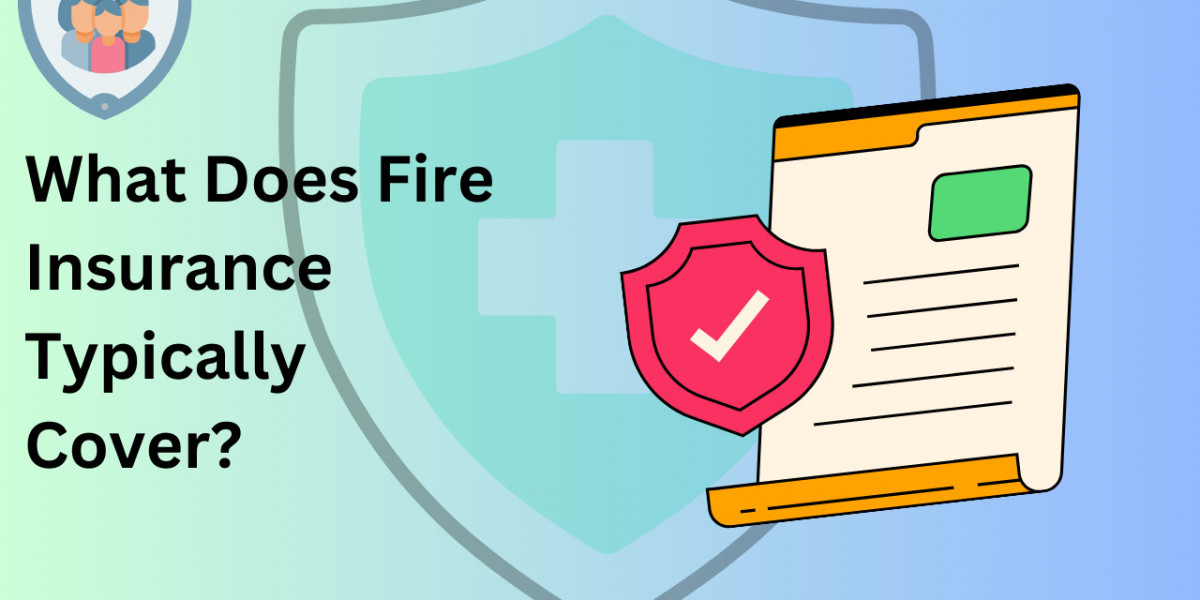Fire insurance is a critical safety net for individuals and businesses, providing financial protection against losses or damages caused by fire-related incidents. Understanding what fire insurance typically covers can help policyholders make informed decisions and secure adequate protection for their assets. In this comprehensive guide, we delve into the specifics of fire insurance coverage, exclusions, and how to optimize your policy for maximum benefit.
Key Features of Fire Insurance
A fire insurance policy is designed to cover losses and damages resulting from fire accidents. It typically includes protection for:
Property Damage: Coverage for buildings, structures, and other immovable assets destroyed or damaged by fire.
Contents Insurance: Protection for movable property such as furniture, machinery, inventory, and personal belongings.
Additional Costs: Coverage for expenses like debris removal, fire brigade charges, and architect fees.
What Fire Insurance Covers?
1. Damage to Residential and Commercial Property
Fire insurance policies cover damages to residential homes, offices, factories, and other commercial establishments. This includes structural damages as well as permanent fixtures and fittings.
2. Coverage for Movable Assets
Policyholders can claim compensation for movable assets such as furniture, equipment, raw materials, and inventory damaged in a fire. This ensures businesses can recover quickly without substantial financial strain.
3. Fire Caused by Accidental and Natural Causes
Fires resulting from accidental causes, such as electrical short circuits or gas leaks, are typically covered. Natural disasters, including lightning strikes leading to fires, are also within the scope of most policies.
4. Additional Perils
Some fire insurance policies extend coverage to additional risks, including:
Explosions
Riots or strikes leading to fires
Impact damage from falling objects
Water damage caused during firefighting efforts
5. Alternative Accommodation Costs
For residential policyholders, fire insurance policy may cover the cost of temporary accommodation if their home becomes uninhabitable due to fire damage.
Exclusions in Fire Insurance
While fire insurance offers broad coverage, it is essential to understand the exclusions to avoid surprises during claims. Common exclusions include:
1. Willful Negligence
Fires caused intentionally by the policyholder or due to gross negligence are not covered.
2. War and Nuclear Risks
Damage caused by war, nuclear radiation, or radioactive contamination is excluded from standard policies.
3. Electrical and Mechanical Failures
Fires resulting from unmaintained electrical systems or machinery breakdowns may not be covered unless explicitly included.
4. Pre-Existing Damage
Claims for damages that existed before the policy's inception are not valid.
5. Valuable Documents and Cash
Losses involving cash, securities, or important documents are typically excluded unless additional coverage is purchased.
Types of Fire Insurance Policies
1. Standard Fire and Special Perils Policy
This is the most common type of fire insurance policy, offering protection against fire and additional risks like floods, earthquakes, and storms.
2. Floating Policy
Ideal for businesses with assets in multiple locations, this policy provides coverage across all declared locations.
3. Comprehensive Policy
A broad policy that includes fire and additional coverage like theft, liability, and loss of rent.
4. Consequential Loss Policy
Designed to cover financial losses arising from business interruptions caused by fire.
How to Choose the Right Fire Insurance Policy?
1. Assess Your Needs
Evaluate the value of your property, assets, and potential risks to determine the coverage amount.
2. Compare Policies
Review multiple policies from reputable insurers to find the best fit for your requirements.
3. Include Add-Ons
Enhance your policy with add-ons such as theft coverage, machinery breakdown coverage, and riot damage protection.
4. Understand Deductibles
Ensure you are aware of the deductible amounts to avoid surprises during claims processing.
How to File a Fire Insurance Claim?
Filing a claim promptly and correctly is crucial to receiving compensation. Follow these steps:
1. Notify the Insurer
Inform your insurance provider immediately after the incident. Most policies have a specific time frame for reporting claims.
2. Provide Documentation
Submit necessary documents such as the claim form, photographs of the damage, and a detailed inventory of lost or damaged items.
3. Cooperate with the Surveyor
Insurers appoint a surveyor to assess the extent of the damage. Provide full cooperation and accurate information during their investigation.
4. Wait for Claim Approval
Once the surveyor submits their report, the insurer processes the claim and disburses the approved amount.
Tips to Optimize Your Fire Insurance Coverage
Review Your Policy Regularly: Ensure your coverage aligns with current property values and inflation.
Invest in Safety Measures: Installing fire alarms and sprinkler systems can reduce premiums.
Declare All Assets: Undeclared assets are not covered during claims, so provide a detailed inventory.
Understand the Fine Print: Read your policy document carefully to understand inclusions and exclusions.
Conclusion
Fire insurance is an essential safeguard against unexpected disasters, offering protection for your property and peace of mind. By understanding what fire insurance typically covers, its exclusions, and how to optimize your policy, you can ensure robust financial security for your assets.








